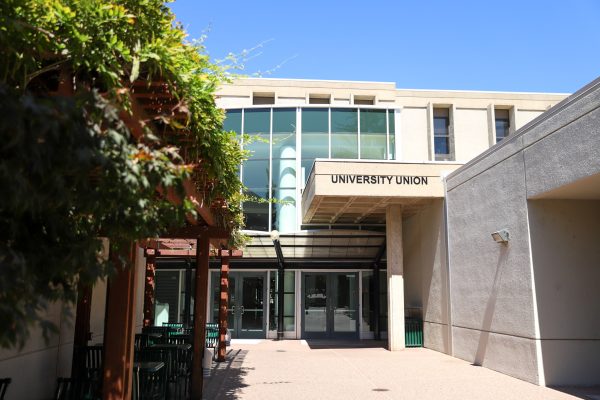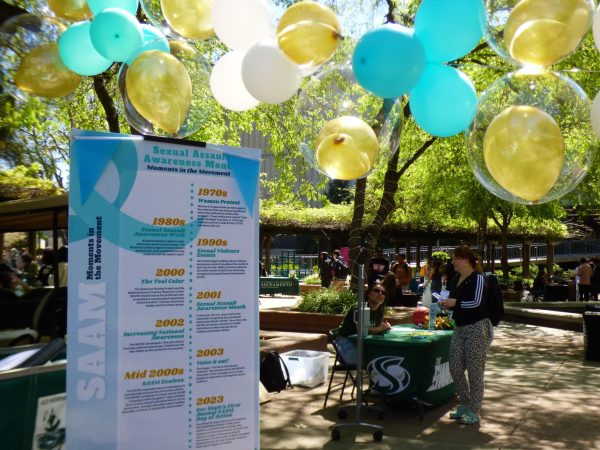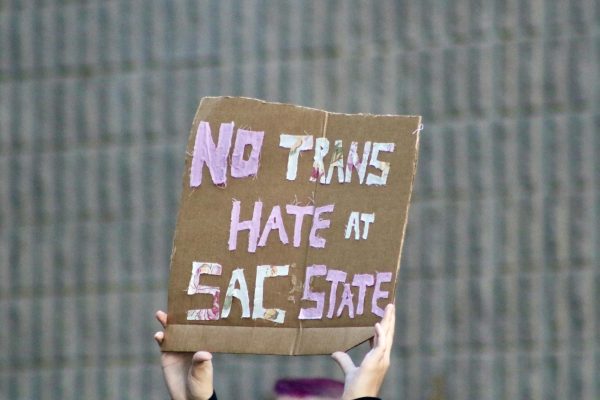Sac State students? research awarded
March 16, 2011
Undergraduate and graduate students took home multiple awards after presenting their research to faculty judges at the 25th Annual Sacramento State Student Research Competition on Saturday.
Senior biological science major Sukhvir Kaur Dhillion won first place in the undergraduate division for her research on the most effective way to swab DNA in sexual assault cases.
Senior anthropology major Sara Warren took home second in the undergraduate division for research on how seasonal food resources affects monkeys in Nicaragua.
Christian Robin Patz won first place in the graduate division with his research about emotional disturbance diagnosis and treatment for Latino students.
Kelly Marie Thomasson placed second in the graduate division, for her research about the effects of tourism on biodiversity in marine protected areas in Maui County.
Students competed in two categories: undergraduate and graduate with a first- and second-place prize for each division.
First-place winners won $500 and the second-place winners were awarded $200. In addition to the four winners, six students were chosen to present their findings at the statewide research competition, which will be held May 6 at Fresno State.
Dhillion entered the competition to practice presenting research, but said she did not believe she would win. Her recognition is now going on her resume, which might give her a leg up on the competition in her field.
“If we get published and recognized for the whole school, I’m hoping we will get more funding for the biology department,” Dhillion said.
Dhillion’s forensics research was about getting the most male DNA from a swab of a female sexual assault victim. She wanted to do research in her field of forensics because she was interested in applying natural sciences to the matter of law.
In her research she had several volunteers who were 18 years or older to kiss intensely for two minutes. She found that after 60 seconds after kissing no male DNA was retrievable.
Further trials using volunteer couples are needed to see if her research can be used in real-world situations. Dhillion believes longer time trials and obtaining genetic profiles are needed.
She then used the “double swab technique,” which is where a wet swab and a dry swab are used, saved together and stored. She analyzed the saliva found on the swabs.
“After intense open-mouth kissing between a female and a male, more genetic information can be obtained about the male by swabbing the outside of the female’s mouth,” Dhillion said.
Communication studies professor Michele Foss-Snowden, a judge in the competition, was looking for a good presenter and researcher who could explain complicated ideas and help her understand a given topic.
“I was looking for unique ideas, creative approaches to research and someone who is well-prepared and will represent Sac State well,” Foss-Snowden said. “We do good work here. We’re looking for the best and the brightest. If they can make me excited, I know it’s special.”
Foss-Snowdenwas impressed by undergraduate students doing non-required research; she was particularly impressed by Warren’s presentation.
Warren studied the activity of mantled howler monkeysthat spend their lives in trees. She found that these monkeys rest 65 percent of the day because of their low caloric diet of leaves. She compared the activities of monkeys in the day and night. She was looking for the correlation between activity and a monkey’s activity level, which depended on the seasonal fruit they ate including fig and chicle, found in chewing gum.
Foss-Snowdenwas impressed because Warren’s research was the first she’s heard about monkeys and their activity levels.
“They have the tendency to watch how to play and learn from parents,” Warren said. “The older you get you don’t want to play or groom, while the younger monkeys hang onto their moms and wrestle around.”
At the competition students represented various disciplines from anthropology, biology, business finance, communications, education and computer science.
Each student had his or her own presentation styles, topics and types of questions that were asked by faculty.
Thomasson, who won second place, found that tourism has an adverse effect on habitats in tourist-accessible Marine Protected Areas, which decreases biodiversity.
“Results suggest recreational usage is a major factor in degradation of coral reef environments,” Thomasson said. “It’s an advertising gimmick, the MPA is trying to attract people to Maui, which affects their habitats.”
Patz, graduate education student, won first place for his research on Latino students and mental health.
“Depression looks different in different communities. It’s more physical ailments than feeling sad amongst Latinos,” Patz said. “White people are sad or blue, while Latinos may say their stomach hurts. My head hurts. I feel sick.”
He found that Latino students make up half of the student population, yet receive less than a third of mental health services from their school.
“The outcome of untreated mental health illness is bad, higher dropout rates, higher incarceration rates and higher suicide rates,” Patz said.
Nicholas Macias, graduate conservation biology student, was chosen as a candidate to compete at the statewide research competition.
“Sac State isn’t known for research, especially biology. We want to show the rest of the state that we’re doing competitive work,” Macias said.
At the statewide competition, students can expect to present their research project to juries of professional experts from major corporations, foundations, public agencies, colleges and universities in California.
“Research in general helps everyone. A lot of people are ignorant about things going around,” Jackson said. “The biggest thing is to present your research to a broad audience, not just a scientist so they can understand your research and why it’s important.”
Mallory Fitescan be reached at [email protected]








































































































































